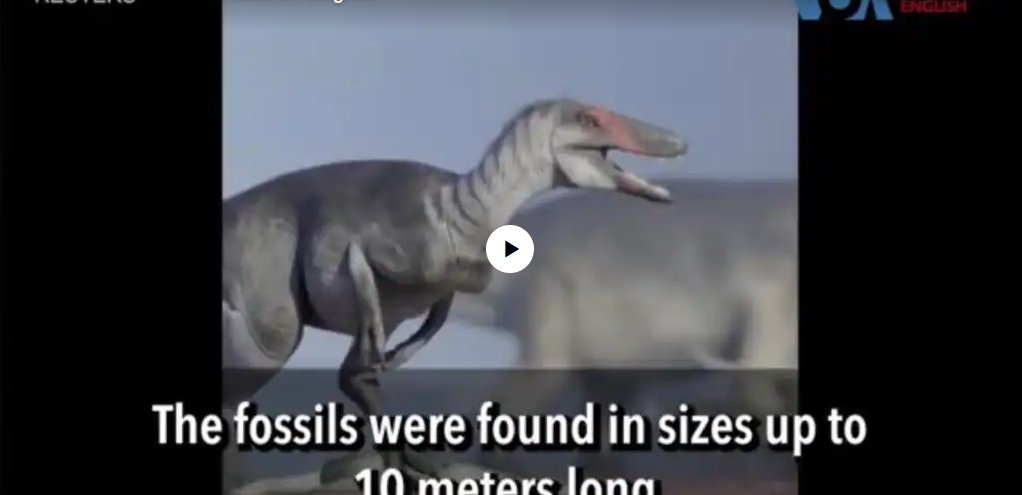Scientists in Chile’s Patagonia area have found the southernmost dinosaur fossils recorded outside Antarctica. The fossils include remains of megaraptors that would have controlled the area’s food chain before their mass extinction.
Megaraptors were carnivorous, or meat-eating, dinosaurs that lived in parts of South America during the Cretaceous period some 70 million years ago. The fossils were found in sizes up to 10 meters long, said the Journal of South American Earth Sciences.
Marcelo Leppe is director of the Chilean Antarctic Institute (INACH). “We were missing a piece,” he told Reuters. “We knew where there were large mammals, there would also be large carnivores, but we hadn’t found them yet.”
The remains were found in Chile’s far south Rio de las Chinas Valley in the Magallanes Basin between 2016 and 2020. The scientists also found some unusual remains of unenlagia, a velociraptor-like dinosaur which was likely covered in feathers.
The fossils, said University of Chile researcher Jared Amudeo, had some qualities not present in similar remains found in Argentina or Brazil.
“It could be a new species, which is very likely, or belong to another family of dinosaurs that are closely related,” he said. He added that more evidence is needed.
The studies also provide more information on the conditions of the meteorite impact on Mexico’s Yucatan Peninsula. That meteorite may have led to the dinosaurs’ extinction some 65 million years ago.
Leppe pointed to a large decrease in temperatures over present-day Patagonia and waves of severe cold lasting up to several thousands of years. The climate, however, was very warm for much of the Cretaceous period.
“This world was already in crisis before (the meteorite) and this is evidenced in the rocks of the Rio de las Chinas Valley,” he said.
I’m Dan Novak.
Dan Novak adapted this story for VOA Learning English based on reporting by Reuters.
______________________________________________________________
Words in This Story
extinction — n. the state or situation that results when something has died out completely
mammal — n. a type of animal that feeds milk to its young and that usually has hair or fur covering most of its skin
species — n. a group of animals or plants that are similar and can produce young animals or plants
